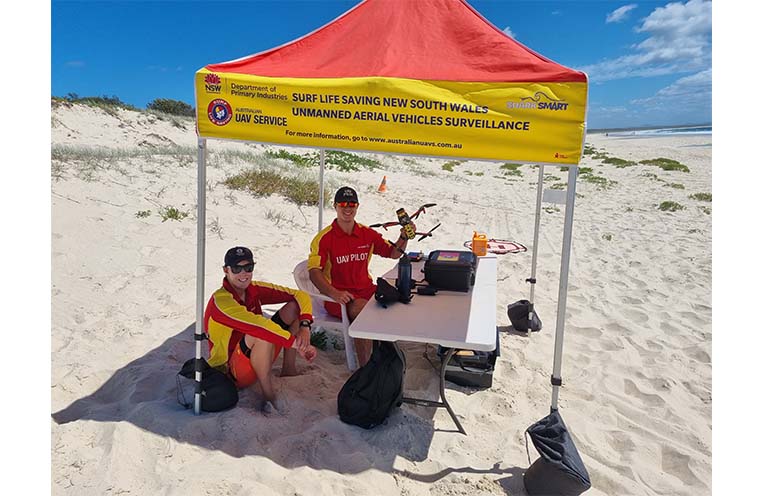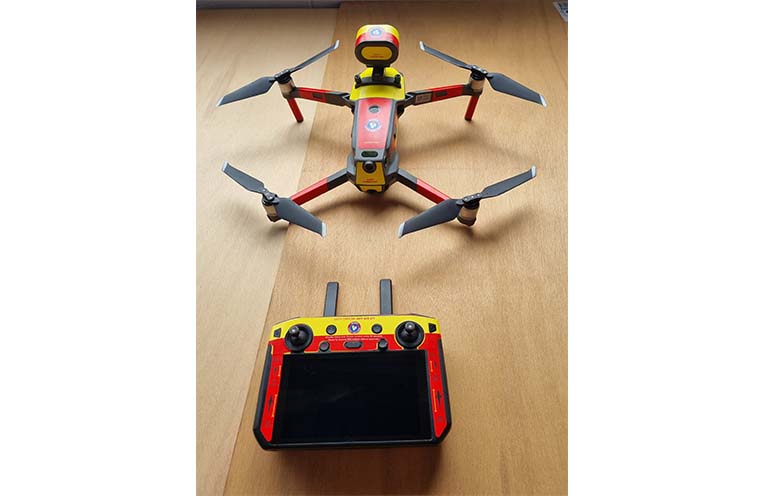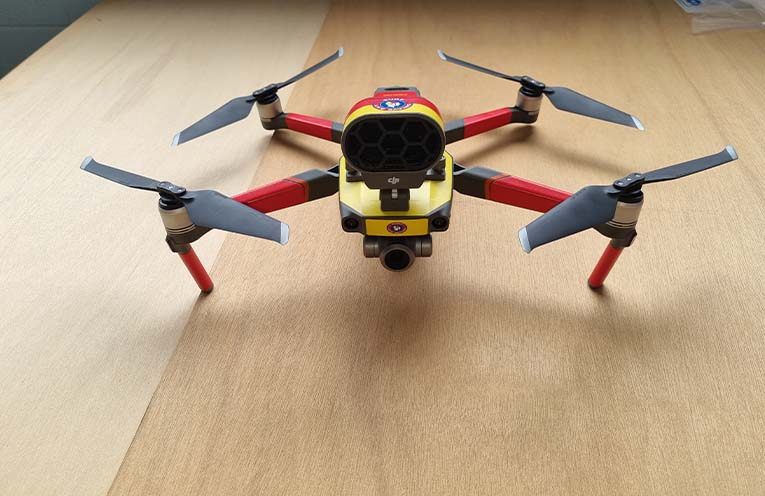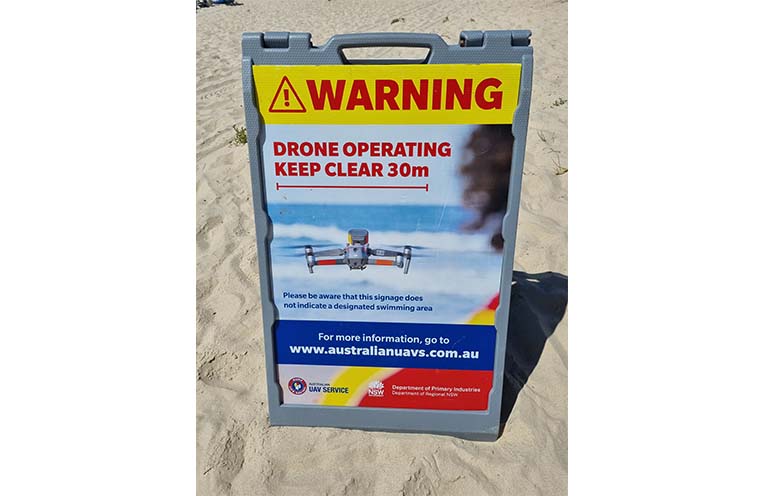
VIGILANT over the sea for the safety of all is a small but purposeful group of Unmanned Aerial Vehicle (UAV) pilots, working in conjunction with the Surf Life Savers (SLS) of NSW this holiday period.
Beachgoers at Hawks Nest may have noticed the cabana erected away from the madding crowd, where the drone operators spend their seven-hour shifts in what could be called the best office in the world.
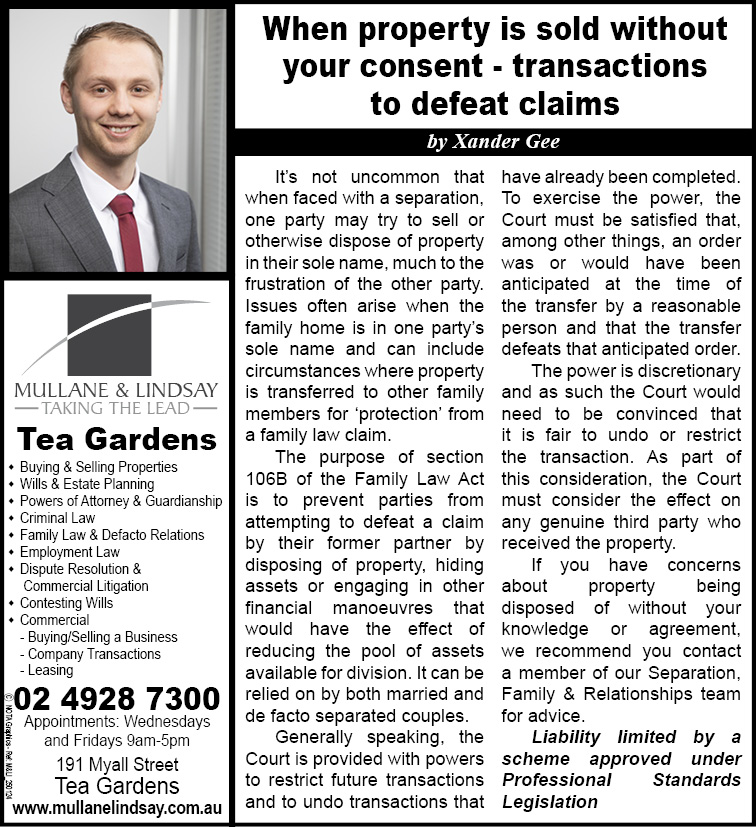 Advertise with News of The Area today.
Advertise with News of The Area today.It’s worth it for your business.
Message us.
Phone us – (02) 4981 8882.
Email us – media@newsofthearea.com.au
“We watch the waters seven days a week throughout the school holidays, and alert the lifeguards of any risks we see,” drone pilot Marcus Garrard told NOTA.
“The program has over 50 locations, all the way down the south coast, and up to the Queensland border.
“We are mainly looking for sharks, but also rips, jellyfish, dolphins, turtles, and ‘bait balls’.”
‘Bait balls’ are last-ditch defensive formations adopted by schools of prey fish, and a clear indicator that an unseen predator is nearby.
“The drone sweeps 400m either side of the flagged lifeguard area, and 250 metres out to sea, and if a shark is spotted, we film it for later review, meanwhile notify lifeguards, and if it comes within 250 metres of swimmers, the beach is closed for at least 30 minutes, and re-swept before re-opening,” Marcus explained.
The drone, a nifty quadcopter with 1.5km range, never ventures farther than human sight, and its battery lasts around 20 minutes, according to Marcus, although the next upgrade will have double that.
The drone also has a speaker siren, so it can be used to alert distant swimmers of any dangers in case of emergency.
While Marcus wears the lifeguard colours, SLS NSW is keen to get more trained lifeguards into the pilot seat.
By Thomas O’KEEFE

